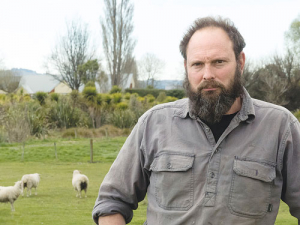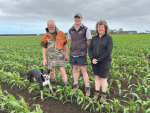“We have some good leads and vehicle descriptions and we know when it occurred. We are just waiting for someone to ring up and say they know someone,” he told Rural News.
Campbell Island sheep are the remnants of an ill-fated attempt to farm the remote sub-Antarctic island during the early years of the 20th century. Wheeler owns the only flock of the type, which now numbers just 30 breeding ewes after the loss of the five.
They were grazing on paddocks he manages within the Styx Mill Conservation Reserve, which is nestled among lifestyle blocks, upmarket subdivisions and the Willowbank Nature Reserve, all inside the Christchurch city boundary.
The sheep, all pregnant and due to lamb within about two weeks, were slaughtered in a small holding pen, where only their entrails, including foetuses, were left behind. Wheeler believes more than one person was responsible as the carcases would have had to be carried out over three locked gates to the road. He thinks it “a little peculiar” that they took the heads, with their identifying eartags.
The incident is thought to have happened on Sunday night, August 27, but was not discovered until nearly a week later.
Wheeler said he would usually check the flock mid-week. However, he had not done so because, instead of being on tight winter rations, the sheep had had the run of three paddocks, with plenty of feed and good weather.
Wheeler is well known to South Island sheep farmers, having run a scanning business for the last 25 years. He takes his ultrasound scanner and handling crate as far north as Farewell Spit and as far south as Geraldine through a seven-day-a-week scanning season from mid-May to early September.
In addition to the pregnant ewes, he also has six Campbell Island rams and about 18 last season’s hoggets, which were grazing elsewhere at the time of the slaughter.
Describing himself as “a bit of a collector of sheep,” Wheeler has owned the flock since taking them over from AgResearch in 2004. He also has about 100 – possibly New Zealand’s largest single flock -- of Finns, about 20 Mohakas, a “wee flock” of Meatmasters, and some Texels, which he describes as his only “real” sheep.
The flocks are spread around his recently bought 36ha farm at Amberley, North Canterbury, and several small leased blocks between Amberley and the city.
Wheeler says the Campbell Island sheep came from an attempt to farm the island starting about 1895 and abandoned about 1930. The flock was originally Merinos and various crossbreeds, but evolved rapidly once left to their fate. The current flock is descended from 10 ewes and four rams retrieved when eradication efforts began on the island in the mid-1970s.

















